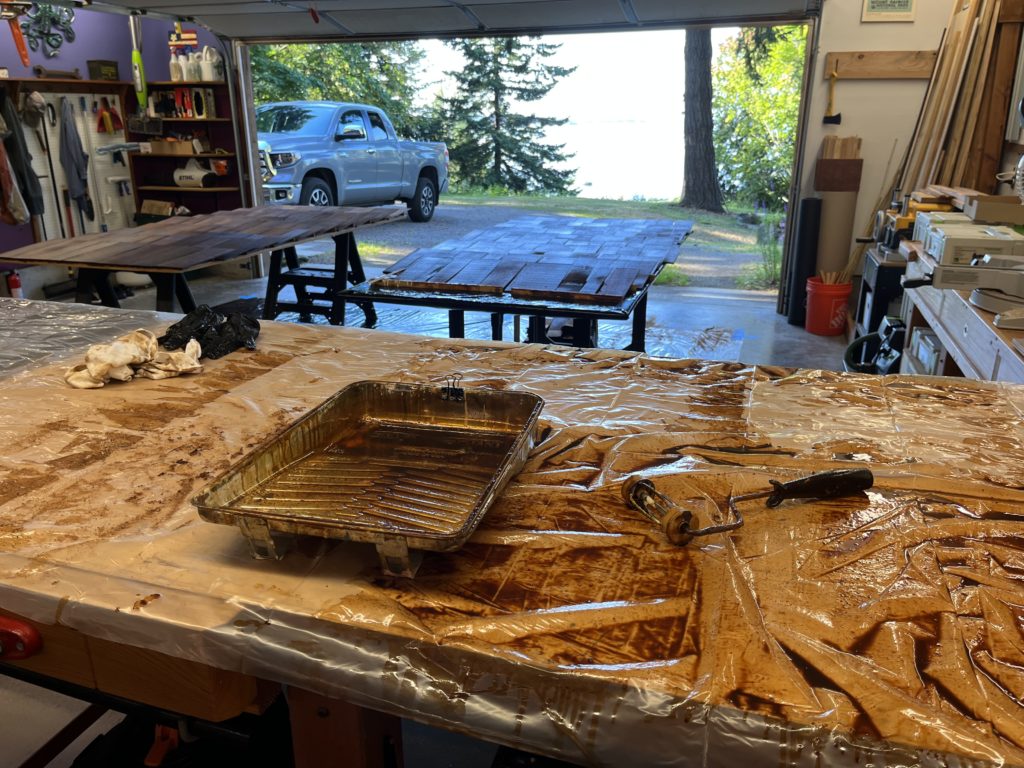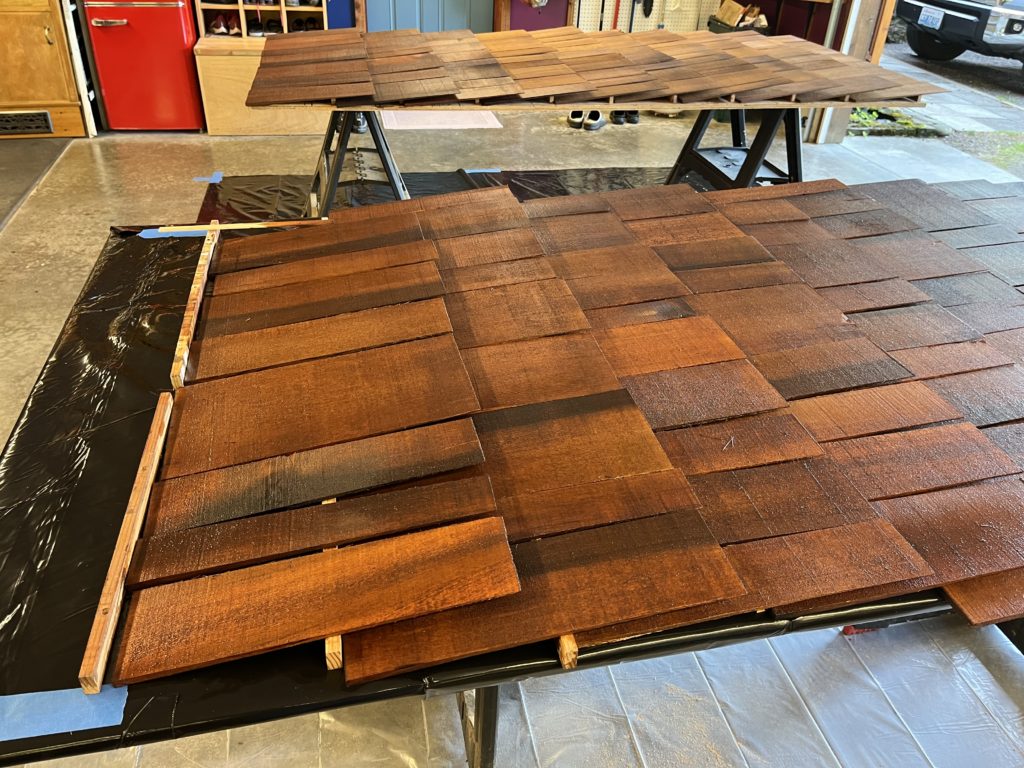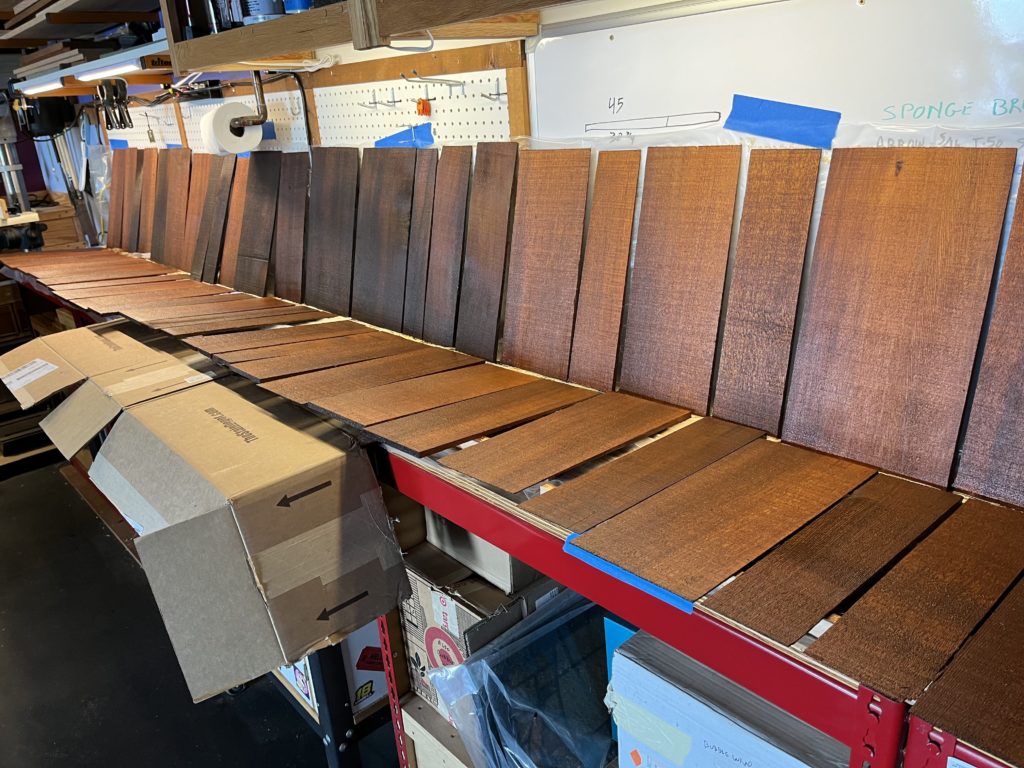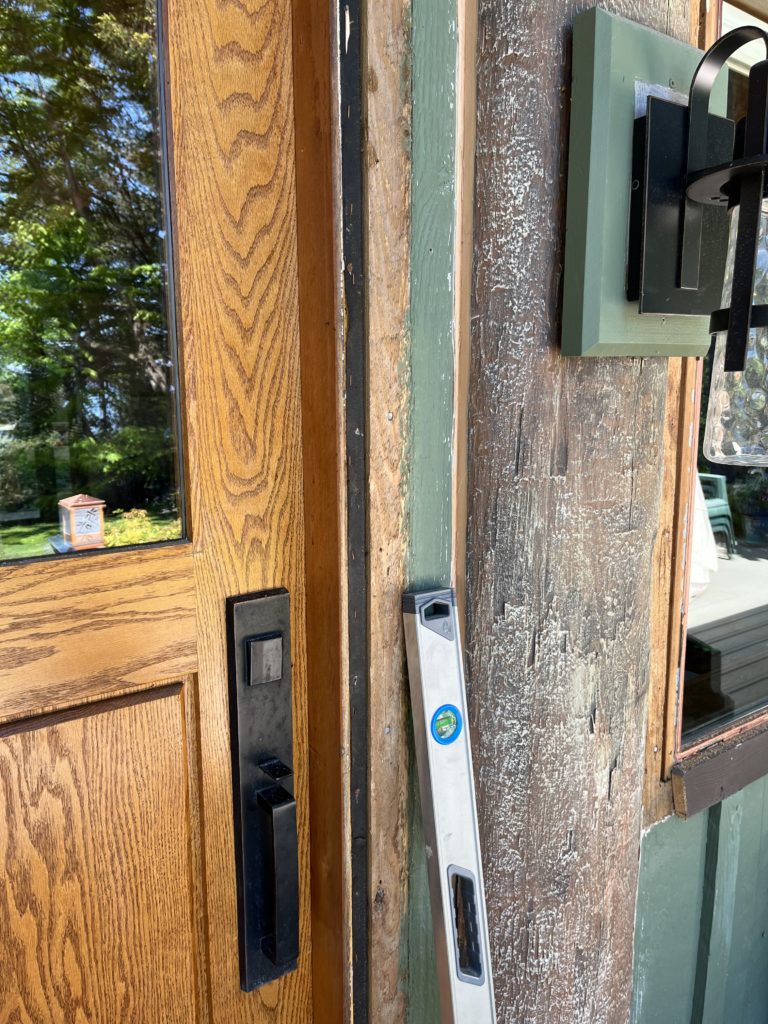
Next up, all the cedar shingles need to be dipped in Sikkens and set out on tables to dry. They need to be nice and dry before they’re installed, which takes a few days. I’ve installed them wet, which is just a big mess. It’s a big enough mess just dipping them.

Watch for spiders when unpacking shingles. I was lucky this time, but when I’ve done this before, there’s usually one big spider per six shingles. A pack of shingles has lots of little voids where spiders can make a living.

Cedar shingles pretty much took over the whole shop for a couple weeks.

